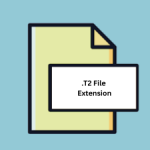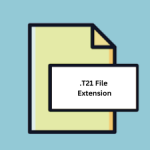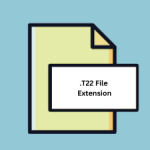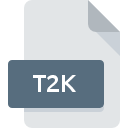.TDM File Extension
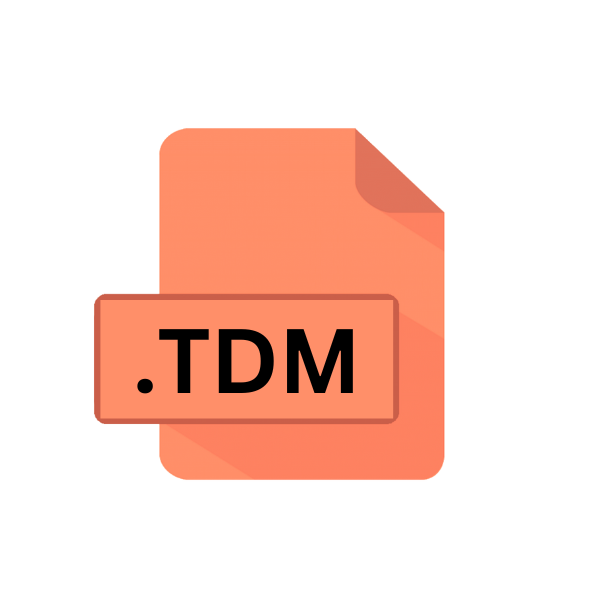
LabVIEW Binary Measurement File
| Developer | National Instruments |
| Popularity | |
| Category | Data Files |
| Format | .TDM |
| Cross Platform | Update Soon |
What is an TDM file?
The .TDM file extension signifies a data file format primarily used with National Instruments’ (NI) technical data management (TDM) streaming. These files are often associated with LabVIEW, a system-design platform and development environment for a visual programming language from National Instruments.
Primarily, .TDM files are designed to store measurement data, usually from scientific and engineering experiments or simulations.
These files not only hold the raw data but also metadata about the data structure and context, allowing for more organized and meaningful data interpretation.
More Information.
Initially, the .TDM file format was designed to address the challenges associated with handling large amounts of data generated by scientific instruments and simulations.
Before its introduction, researchers and engineers faced difficulties in managing, analyzing, and sharing large datasets.
The .TDM format was introduced to streamline these processes, offering a structured way to store both data and metadata efficiently.
This not only facilitated easier data analysis and interpretation but also improved data sharing and collaboration among professionals.
Origin Of This File.
The .TDM file format was introduced by National Instruments as part of their strategy to provide an efficient way of managing large sets of data, particularly from scientific and engineering fields.
It was developed to work seamlessly with NI’s LabVIEW, DIAdem, and other software tools, ensuring a comprehensive ecosystem for data acquisition, analysis, and management.
The introduction of the .TDM file format marked a significant improvement in data management, particularly in dealing with large datasets common in scientific research and engineering projects.
File Structure Technical Specification.
A .TDM file is structured in a hierarchical manner, consisting of three primary sections: the file header, the channel groups, and the channel information.
The file header contains metadata about the file, including the author, the time of creation, and the description of the data.
Following the header are channel groups, each representing a collection of channels where each channel corresponds to a particular set of data, like a sensor reading.
The channel information section contains the actual data values and metadata about each channel, such as the unit of measurement, the name of the channel, and any scaling information.
The data in .TDM files is stored in a binary format, which makes it compact and efficient for storing large amounts of data.
This also means that reading the data requires a specialized software that understands the structure of .TDM files.
How to Convert the File?
Converting a .TDM file, commonly associated with National Instruments, typically involves specialized software like NI DIAdem or LabVIEW, particularly on Windows.
In DIAdem, you’d load your .TDM file, review the data, and then export it to a format like CSV or XLSX. Linux users might employ Python libraries or Wine to run compatible Windows applications.
For macOS, setting up a Windows environment via a VM or Boot Camp allows running these applications. The process ensures data integrity and requires understanding the file’s structure and content, ensuring accurate conversion across different operating systems.
Advantages And Disadvantages.
Advantage:
- Efficient Data Management: The .TDM format allows for efficient organization and management of large datasets, making it easier for users to handle complex data structures.
- Integrated Metadata: Storing data along with its metadata ensures that the context and structure of the data are preserved, facilitating more accurate analysis and interpretation.
- Compatibility: .TDM files are designed to be compatible with various National Instruments’ software, providing a seamless experience for data acquisition, analysis, and management.
Disadvantage:
- Software Dependency: To access and manipulate .TDM files, one typically needs software that specifically supports this format, which can limit accessibility and convenience.
- Complexity: The hierarchical structure, while beneficial for data organization, can be complex to understand and navigate, especially for users unfamiliar with the format.
How to Open TDM?
Open In Windows
- NI DIAdem: This is a preferred tool for managing, analyzing, and reporting data that has been collected during data acquisition and/or in automated test and measurement applications. DIAdem is specifically designed to read, process, and analyze .TDM files.
- LabVIEW: You can use LabVIEW to open and analyze .TDM files. It provides a flexible environment for automating the analysis and visualization of data from a .TDM file.
Open In Linux
- Python with PyTDM Reader: If you’re programming-oriented, you can use Python scripts with libraries like PyTDM Reader to read .TDM files. This approach is more technical and requires some programming knowledge.
- Use Wine to Run Windows Applications: Linux users can use Wine to run Windows applications that can open .TDM files, like NI DIAdem or LabVIEW.
Open In MAC
- Virtual Machines or Dual Boot: Running Windows on your Mac through a virtual machine (like Parallels Desktop or VMware Fusion) or via Boot Camp can allow you to use Windows applications such as NI DIAdem or LabVIEW to open .TDM files.
- CrossOver Mac: This is another tool that allows you to run Windows applications on macOS, potentially letting you open .TDM files using Windows-based applications.
Open In Android
- Remote Desktop: Use a remote desktop application to access a Windows or Linux machine that has the necessary software to open .TDM files.
- Convert and Transfer: Convert the .TDM files to a more accessible format like .CSV or .XLSX on your computer and then transfer the converted files to your Android device.
Open In IOS
- Remote Desktop Applications: Similar to Android, you can use remote desktop apps to access a computer that can open .TDM files, then view or process the data on your iOS device.
- Convert and Transfer: Convert the .TDM files on your computer to a format compatible with iOS apps (like .CSV for Excel or Numbers) and then transfer these files to your iOS device.
Open in Others
- Third-Party Conversion Tools: There may be specific third-party tools or online services that can convert .TDM files into more widely accessible formats, though availability and reliability can vary.
- Custom Scripts or Applications: In some specialized environments (like certain industrial or research settings), it might be necessary to develop custom scripts or applications to process and view .TDM files.
